I have a couple of questions for you.
- Are you moving to London?
- Are you a professional 30-something?
- Are you looking for areas in London that meet your requirements?
If you answered yes to all three questions, then read on!
“Where should I live in London?”
London is big. Very big.
But you can also think of London as a collection of villages, each of which has its own distinctive character, all connected by a public transport system that is the envy of Japan er… the rest of the UK.
Even if you’ve lived in London for many years, chances are that you’ll only know a lot about a handful of these villages.
What do you know about living in Rotherhithe? How about Hanwell? Walthamstow?
Some of these areas might be exactly what you’re looking for. Others, not so much.
That’s why I built FindMyArea. It’s a free tool where you pop in the stuff you care about (budget, commute destinations, local amenities etc) and then it gives you a list of areas in London (e.g. Hackney or Richmond) that satisfy your requirements.

Let’s see it in action!
You might have the following requirements for the area of your dreams (it’s hard to do this without stereotyping, so bear with me!)…
Things that are essential to you
- Budget: Since you’re a professional, your budget isn’t tiny – you can afford up to £1,500 per calendar month.
- Property size: 1 or 2 bedrooms. Studios are too small and you don’t need 3 bedrooms.
- Commute: You want to be able to get into work in less than 45 minutes via public transport. FindMyArea lets you put in your exact workplace but we’ll pretend that you work at Covent Garden Station.
- Like-minded people: You want to socialise with people who are at a similar life stage, so ideally an area with lots of other people in their 30s.
Nice to haves
- Dining out: You’d like all the cuisines: Indian, Thai, French, Italian…
- Nightlife & culture: The more the merrier! Cinemas, bars, theatres, you name it.
- Supermarkets: Waitrose. Add organic multigrain quinoa tofu to the basket please.
- Health & fitness: Going to the gym is important after all that eating – either a Virgin Active or Nuffield Health in the area will do. You also want to live in an area where people are generally in good health.
- Green spaces: You’d like a lot of green space as a respite from the chaos of London.
So let’s put these requirements into FindMyArea and see what areas it suggests!

Results
Looks like there are a lot of good matches! All 3 of your essential criteria and almost all of your 18 nice-to-haves are satisfied by the top-matching areas in London.
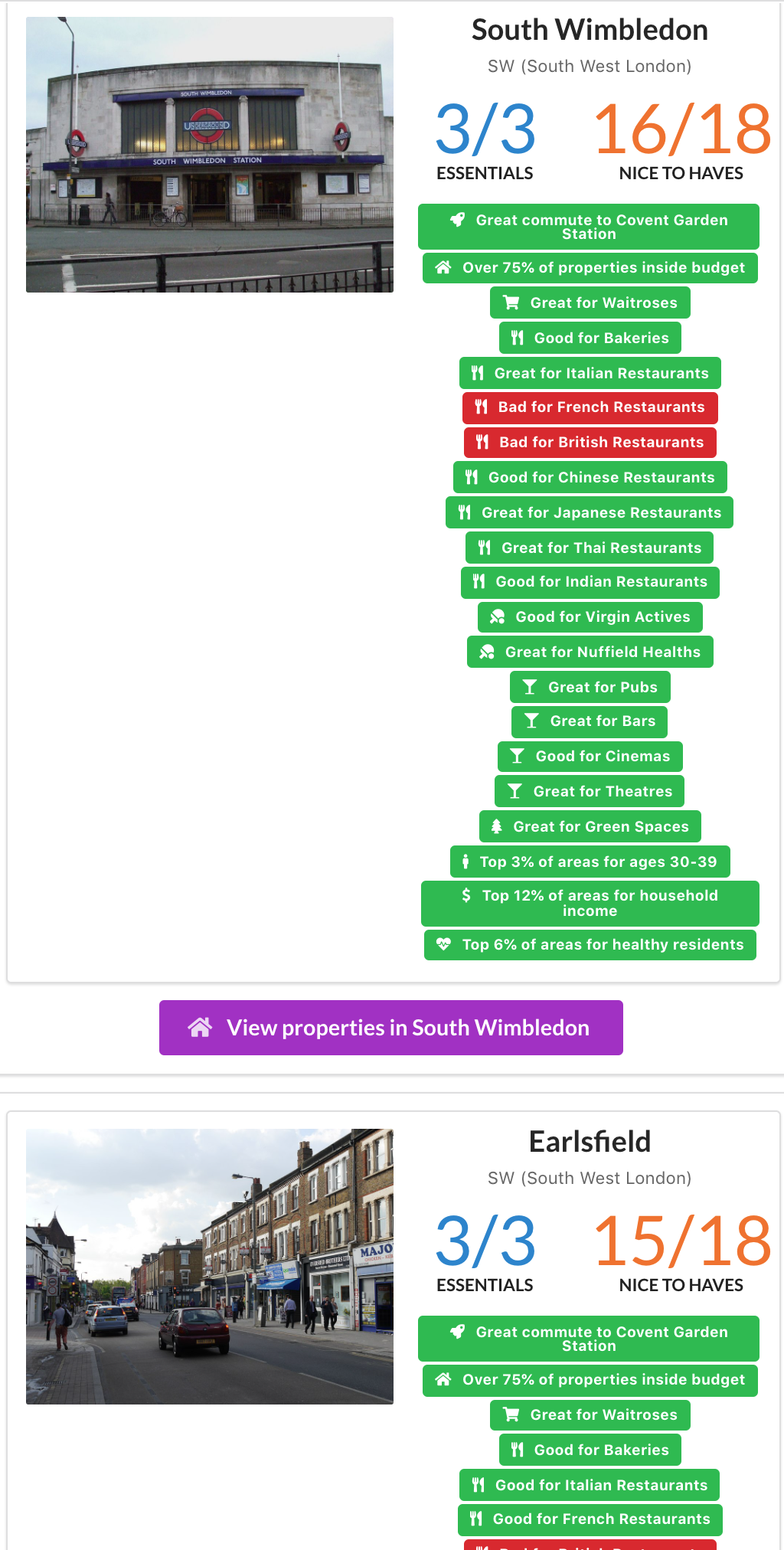
You can see that most of your matches are concentrated in north and south London, with relatively little in east, west or central London.
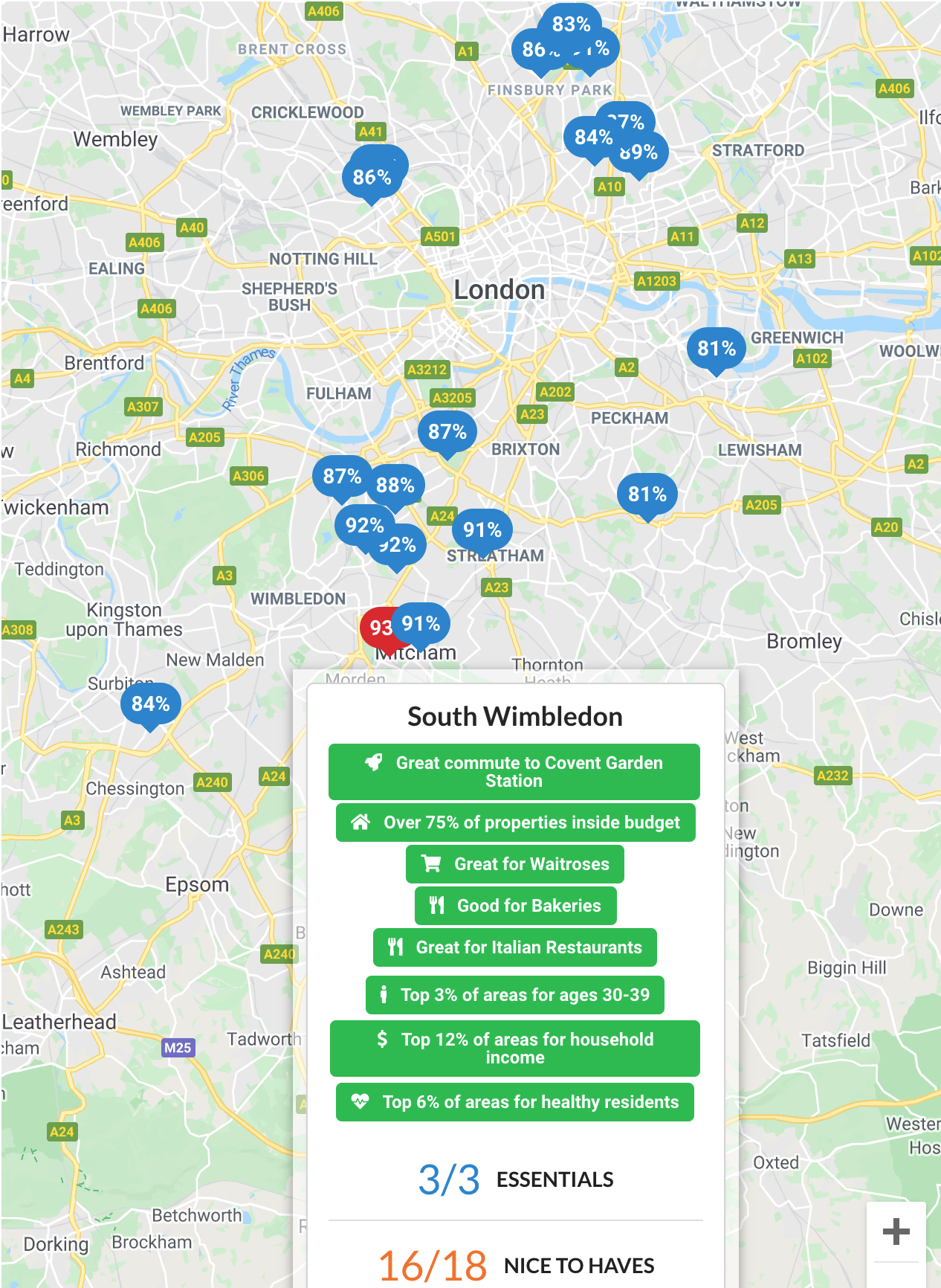
This being London, it’s hard to get everything you want unless you have a near-unlimited budget. Having said that, there are plenty of great options if you’re willing to compromise on one or two nice-to-haves.
Let’s look at two of the more expensive areas, just to get an idea of what’s possible at the top end of your budget.
Show me where the best areas are!
Don’t want to read the whole article? Skip straight to the results:
Location more important than property
West Hampstead
With plenty of green space (one of the largest parks in London, Hampstead Heath, is within walking distance), a bustling high street and a quick commute into central London, West Hampstead ticks virtually all the boxes. It’s very popular with Londoners in their 30s and is in the top 4% of all areas for this age group.
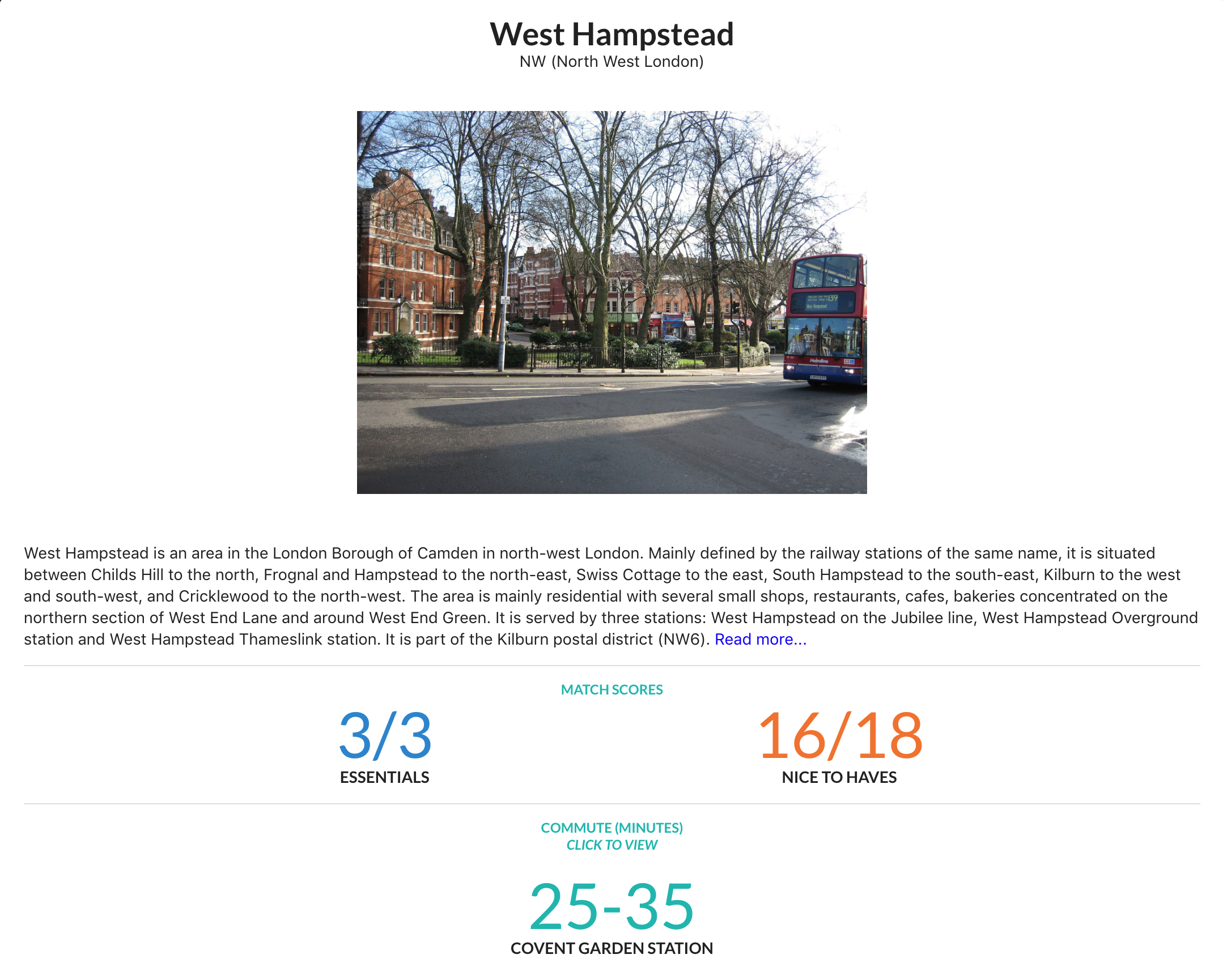
All this comes at a price, however. At £1,479pcm, the median price for a 1-bedroom property in West Hampstead is only just inside your budget.
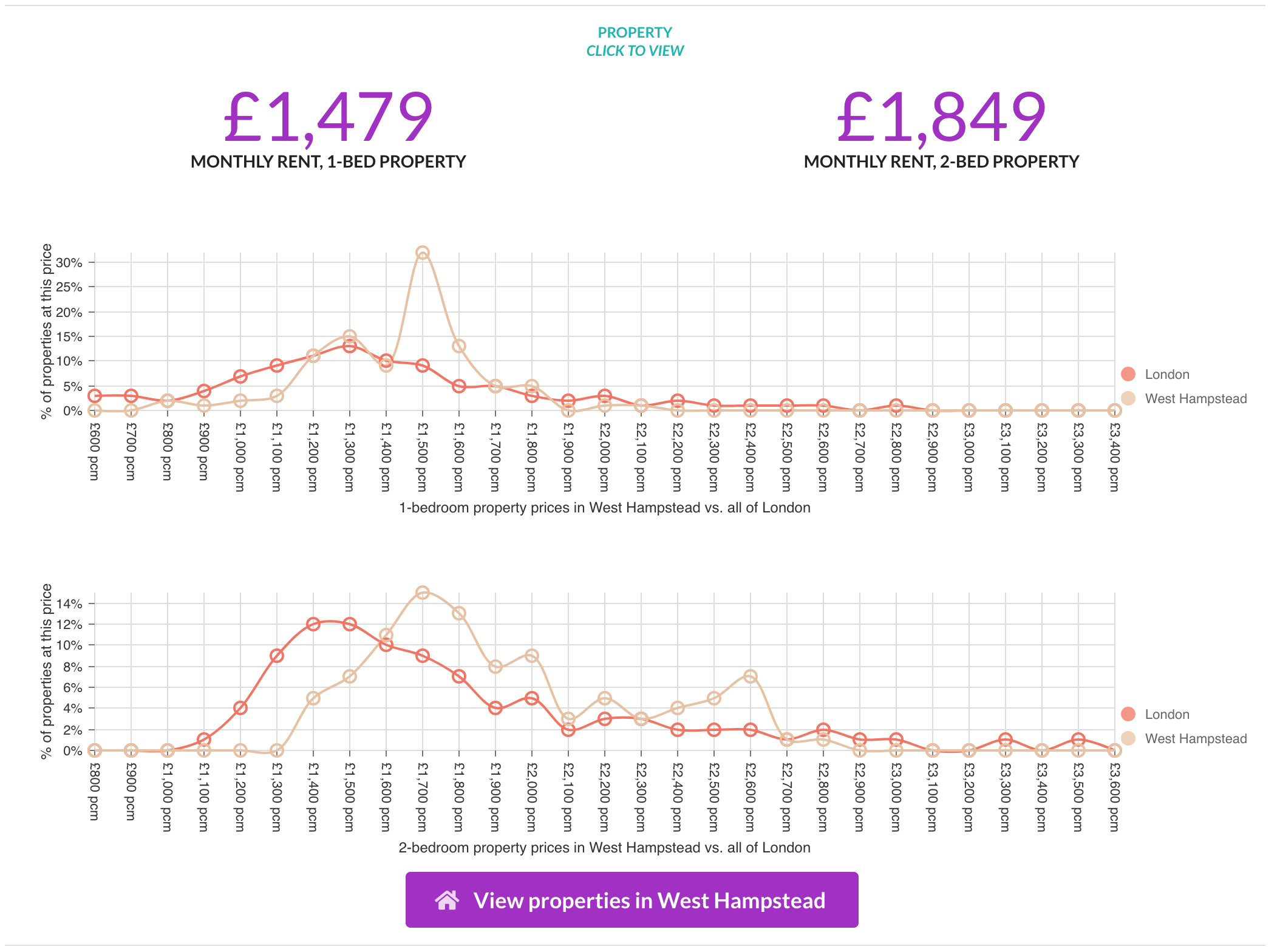
Putney
Putney is similarly priced to West Hampstead, with the median price for a 1-bedroom flat coming in at £1,405. It is also excellent for food, drink and shopping – everything you need can be found within walking distance of the station. Putney Heath is a great park, with Richmond Park also reachable if you don’t mind walking a little further afield.
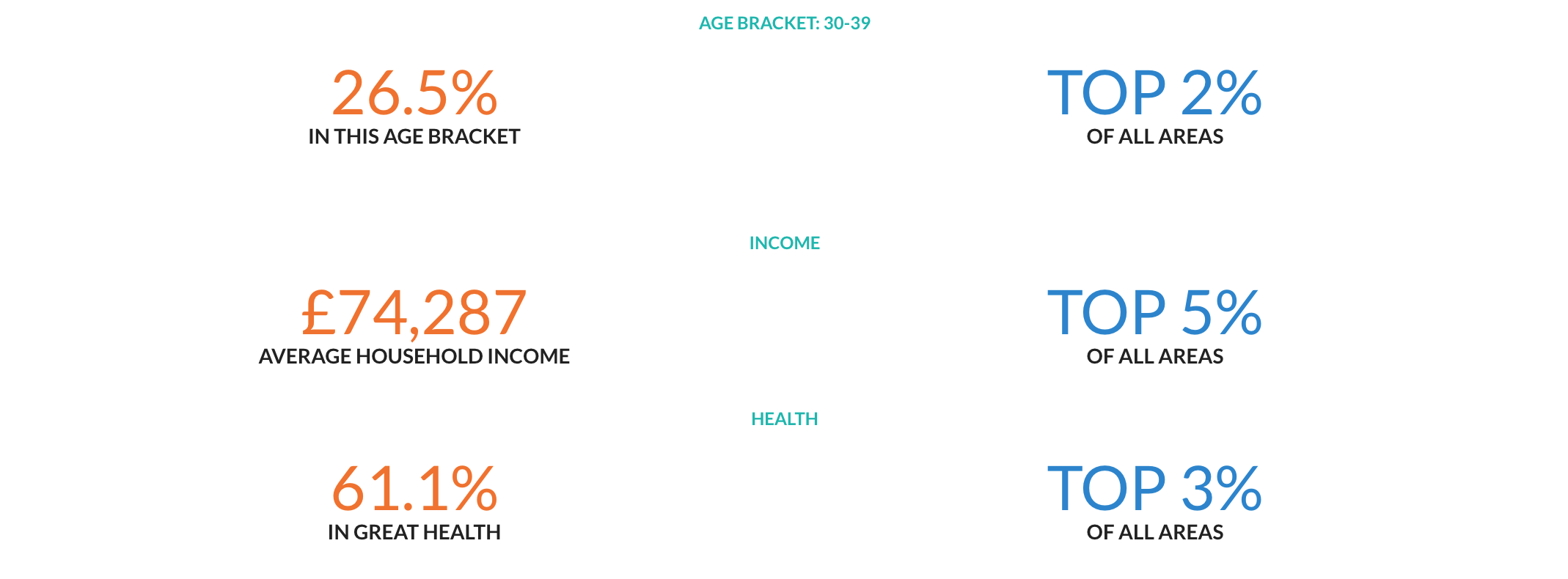
So Putney offers many of the same advantages as West Hampstead. The main difference is their respective locations (Putney is in South West London, West Hampstead is North West) and transport connections.
You can use FindMyArea to prioritise the connections that are most valuable to you (e.g. you might want to be on the Victoria line but not care about the Overground).
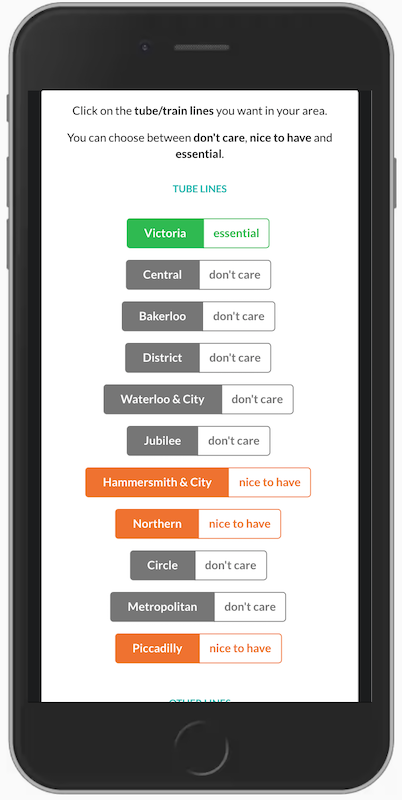
More property for your buck
Colliers Wood
You might never have heard of it before but Colliers Wood (located near Wimbledon) sounds promising. Most notably, it’s much cheaper than the above options: the median price of a 2-bed flat is well within your budget.
It also has a great commute to Covent Garden, plus there are some lovely green spaces in the area and plenty of local amenities. And it’s in the top 3% of the most popular areas in London for the 30s age group!
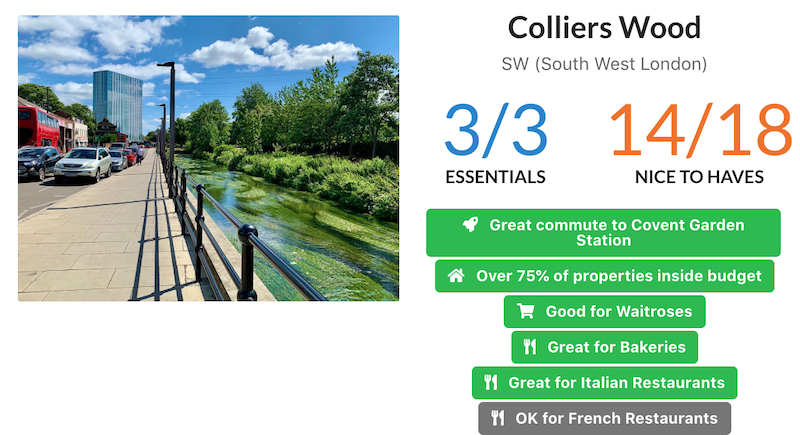
The downsides? It’s a bit of a walk to the food, drink, shopping and other amenities in Wimbledon; if you want to be right in the middle of the action, West Hampstead and the like are better bets. So you’re trading off a bit of convenience for a somewhat better price.
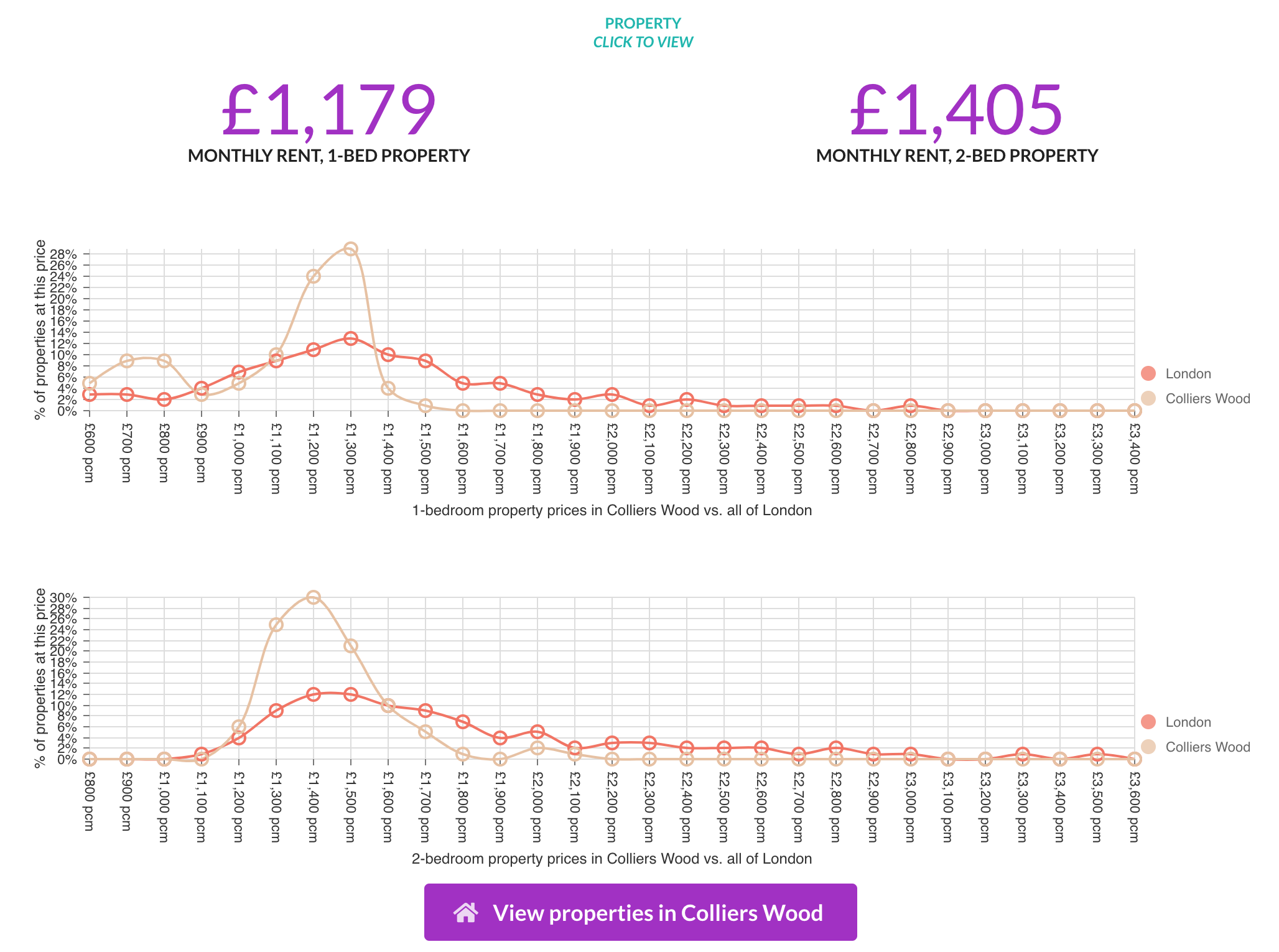
Other great options
Stoke Newington
If you fancy something towards the east, Stoke Newington is an excellent spot with tons of character and great food and drink options (not to mention hipsters). It doesn’t have its own tube station, but makes up for it with good buses and being within cycling distance of central London.
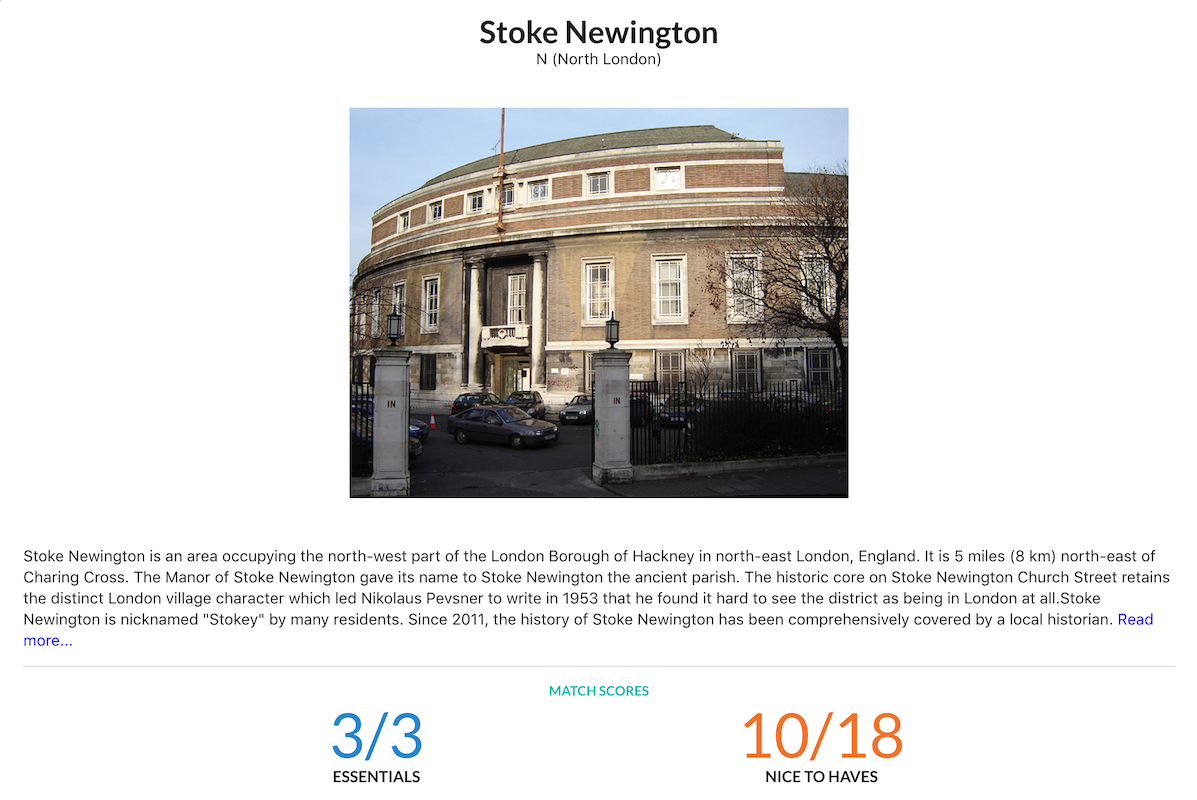
East Dulwich
East Dulwich is what you might call a “lovely area” – it’s relaxed, safe and has great parks and local amenities. Like Stoke Newington, it doesn’t have a tube station but is well-served by trains and buses.
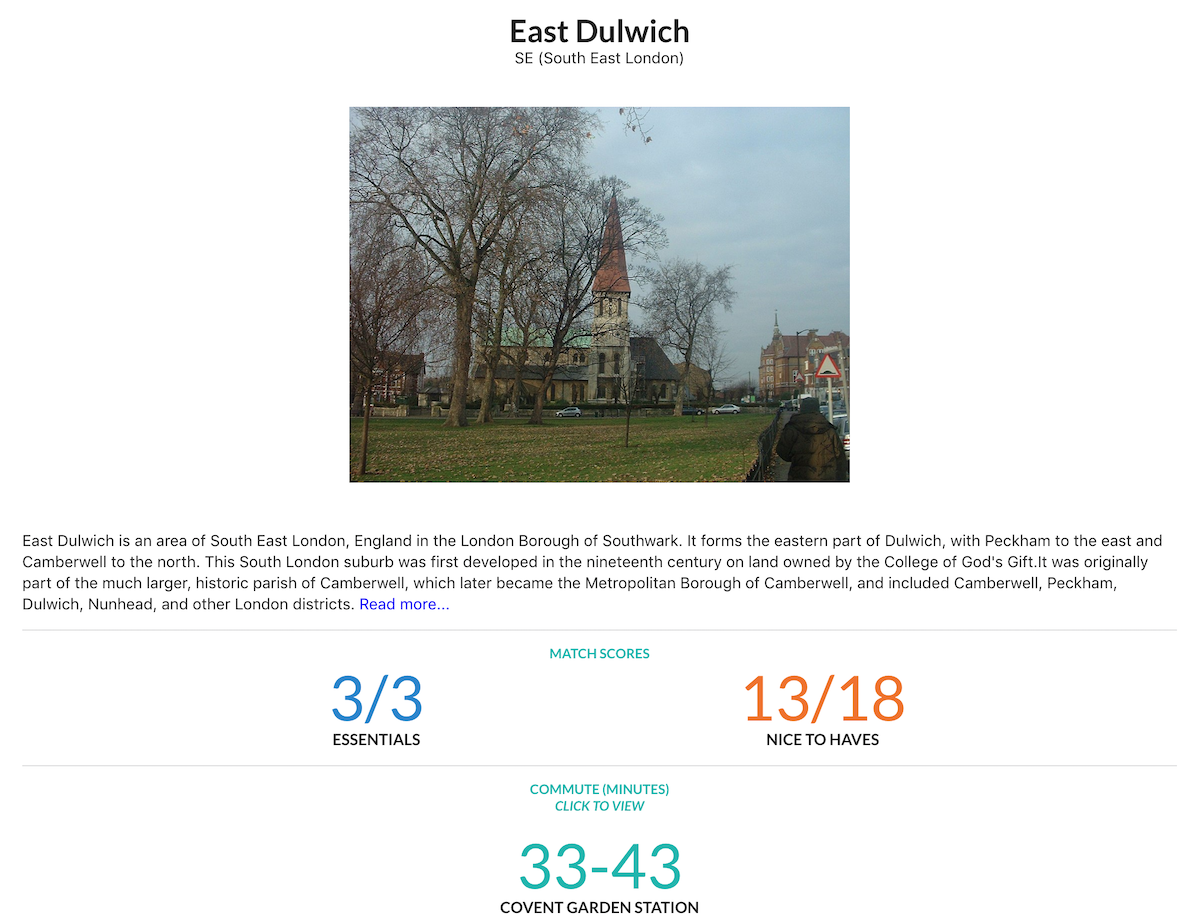
What could I get for even more money?
You can use the Edit Filters to adjust your chosen criteria without having to start over.
Let’s see what happens if we increase the budget to £2,500pcm… you can easily spend a lot more money in London, but I like to keep things reasonable :-)
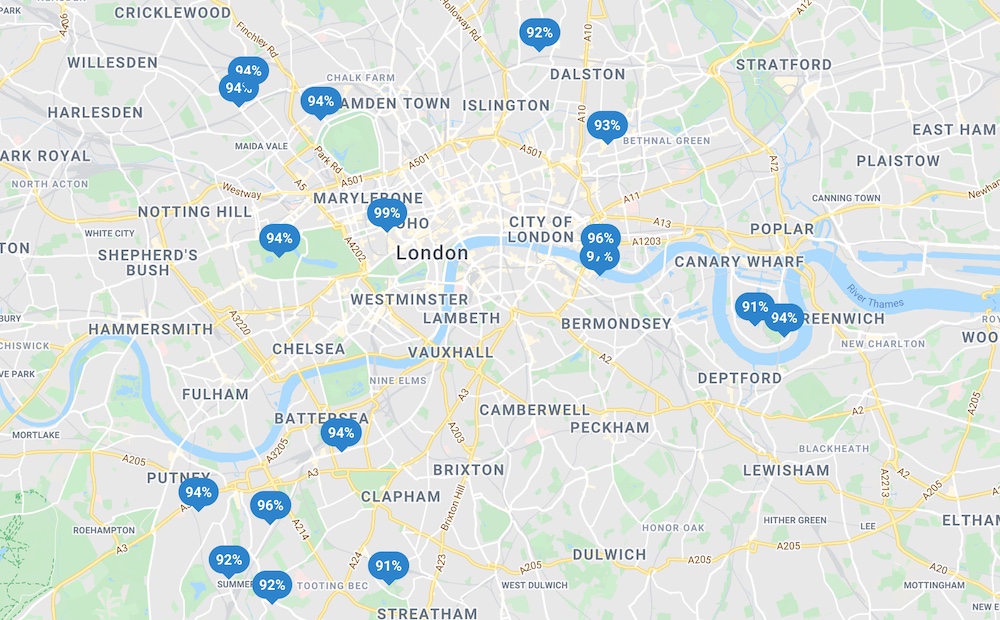
The best matches for your criteria are now in central London: Marylebone, Tower Hill and Bayswater are all in the top 5, although areas such as Wandsworth still feature highly.
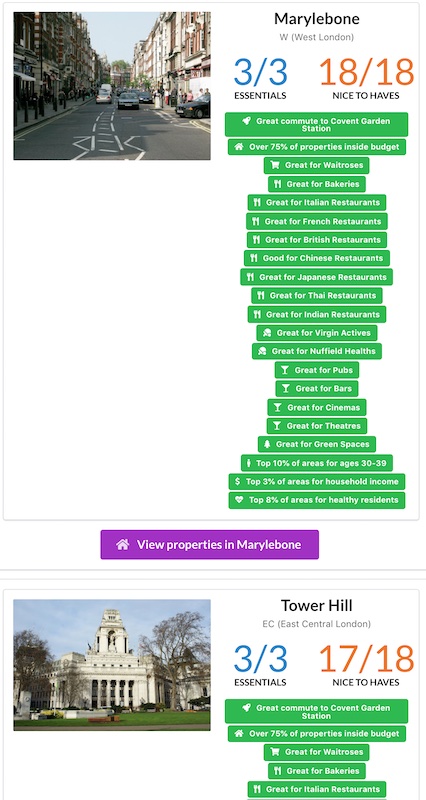
What do you get for this money? You’ll have a virtually unlimited selection of local amenities to choose from – you could eat and drink at a different establishment every day of the year and still not run out of places (although you might eventually run out of cash!).
Needless to say commuting will also be much better: you’ll likely have the option of walking to the office, and central London is extremely well-connected so any other type of journey (e.g. to Heathrow Airport) will generally also be easier.
You can probably guess what the downsides of living central are. It’s not the best place to be if you want a quiet life, with the exception of a few oases like the Barbican.
There are also relatively few large green spaces in central London, although there are plenty of small parks dotted around. With its proximity to Regent’s Park, Marylebone is an excellent choice if you want to live centrally but also have access to a big park.
Wait, my budget isn’t that high!
Unless you’ve been living under a rock, you’ll know that London isn’t exactly a cheap city.
Reducing your budget will unfortunately mean you have to make some compromises, but FindMyArea will tell you what your best bets are.
Here’s what you get with a budget of £1,250pcm (if you drop your budget below this, then you might want to consider flatsharing – unless you’re completely averse to living with others!).
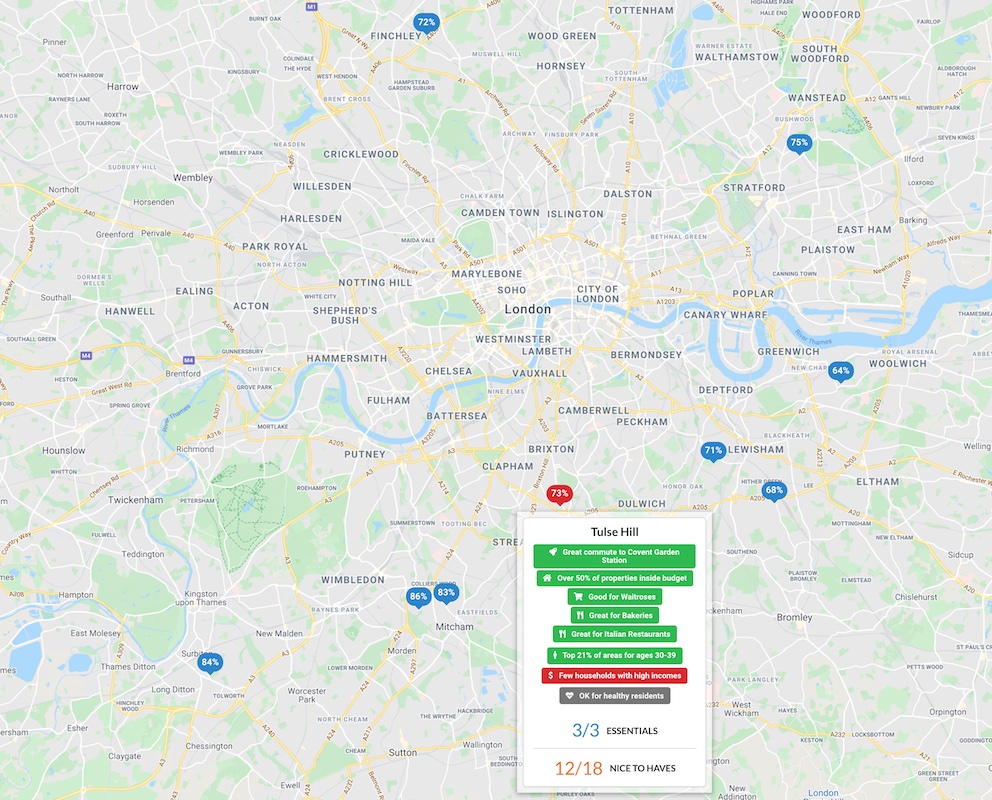
As you can see, the main effect of having a smaller budget is that you’ll be closer to the outskirts of London, with Surbiton, Croydon and South Wimbledon amongst the top matches.
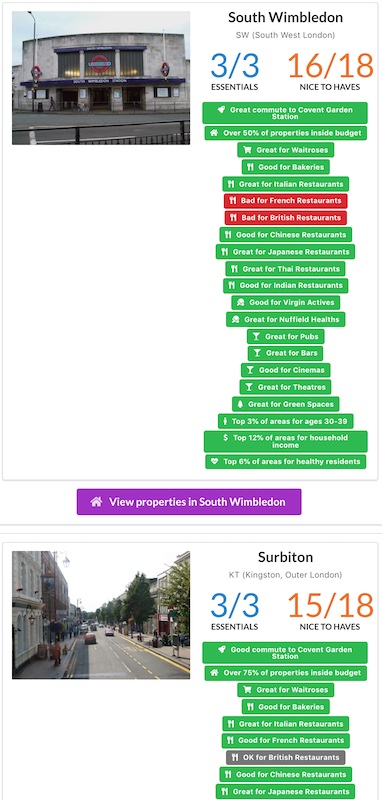
Of course, these are not “bad” areas! Most of these neighbourhoods will be relatively quiet, have good local amenities and a lot of green space.
The main disadvantage is that your commute will be somewhat longer; with fewer connections in general, you’ll want to ensure that your regular journeys won’t be too difficult. You can use FindMyArea to find the cheapest areas with a reasonable commute for you, just like we did here.
I’ve chosen some areas. How do I find out more?
If you want to research some areas more thoroughly, you could just use Google.
But to make your life a bit easier, FindMyArea creates a personalised “detail” page for each area that only shows the stuff that matters to you.
Just click on any area in the list or map to see its detail page.
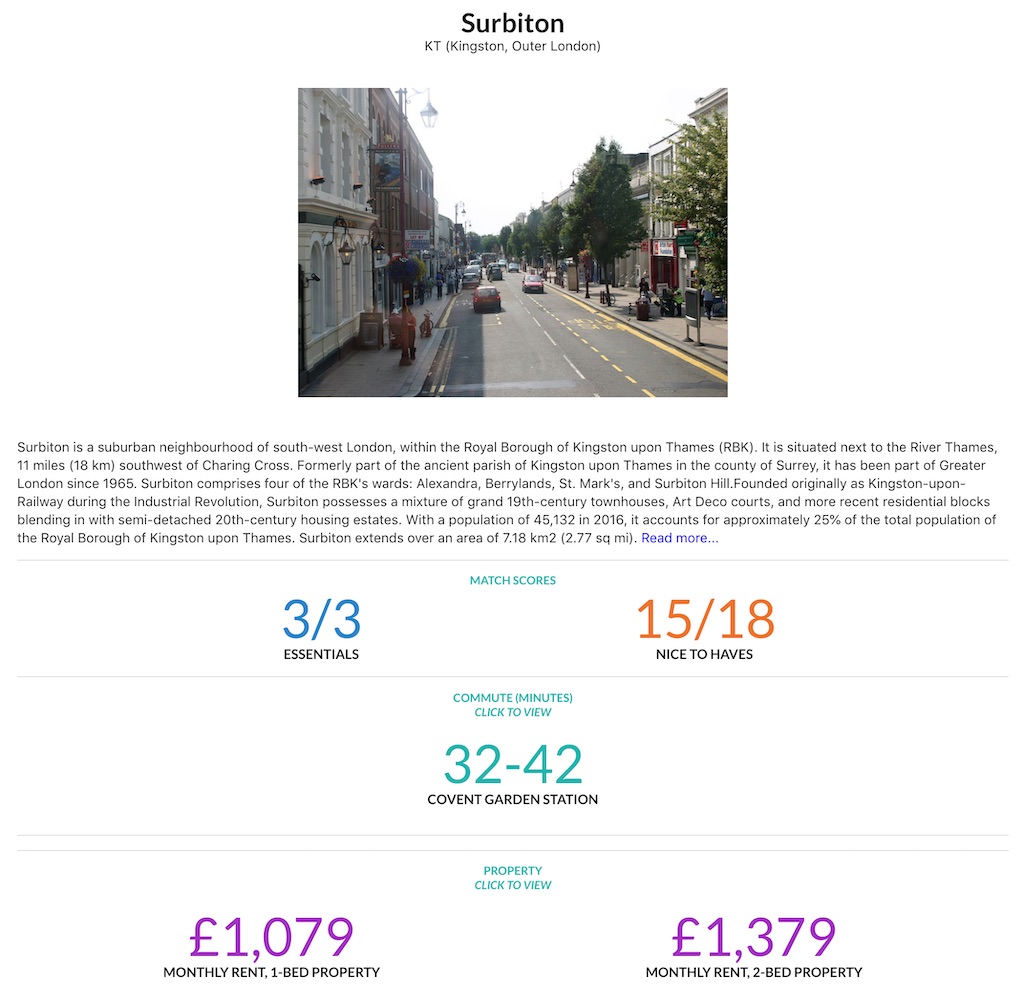
From here, you can do further research into anything that particularly interests you:
- Click on “View Properties” to see property listings for your chosen area
- Click on any of the local amenities to see where they are on a map
- Click on the commute time to see the actual commute route itself, complete with directions
- Click on “Read More” to see the Wikipedia description of the area
Basically, just click on everything and you’ll see all sorts of useful stuff!
Don’t want to lose your results and criteria? Just hit the “Save Results” button to save everything to a permanent shareable link (no need to create an account).

When you’re ready to return, just use the shareable link to retrieve the same results again. You can also adjust your criteria some more if any new requirements have come up.
Try it for yourself
Take a look at the full list of the best areas for professionals in their 30s in London.
You can look at the results in detail and adjust the criteria to suit your specific requirements via the “Edit Filters” button.
Or enter your requirements from scratch to find the perfect area in London for you.
Thanks for reading! If you want to help me improve FindMyArea, you might like to join the beta program. Or just drop me a message the old-fashioned way for general comments and questions.
